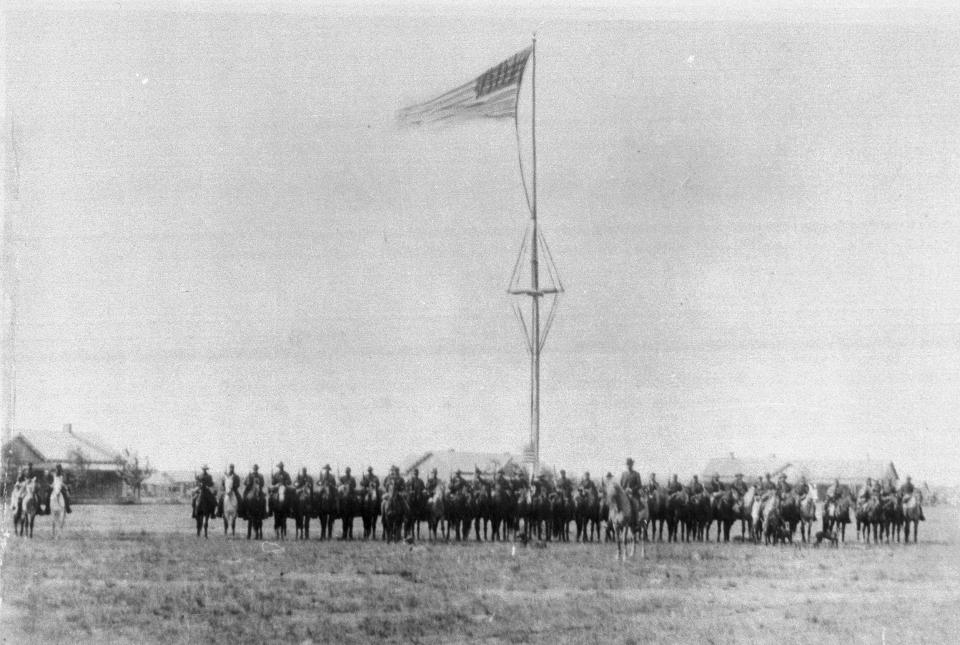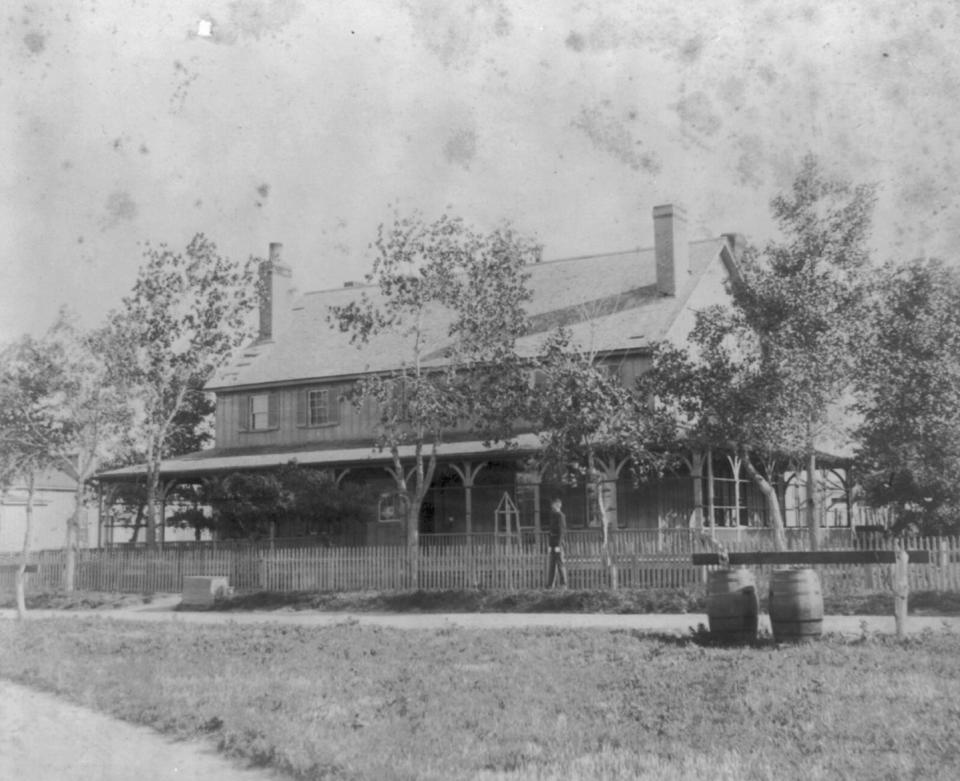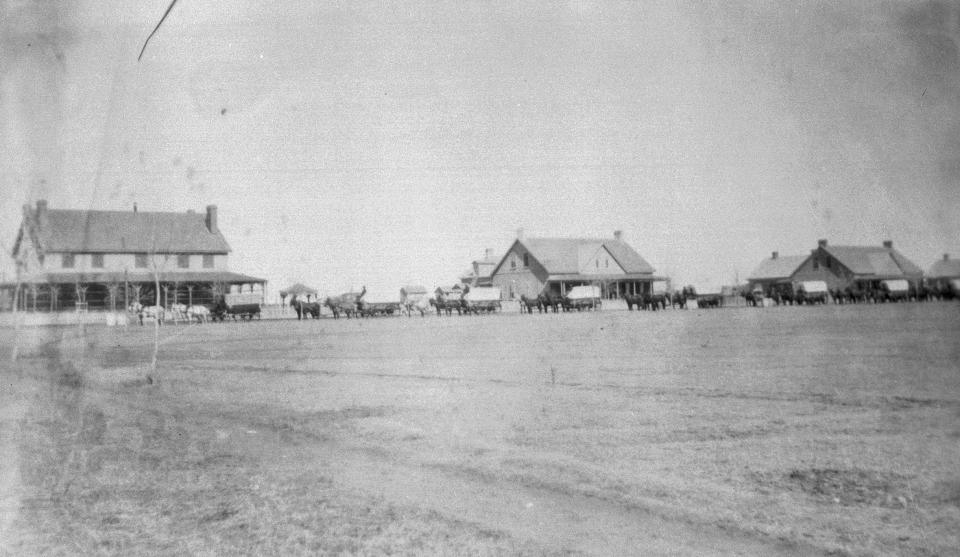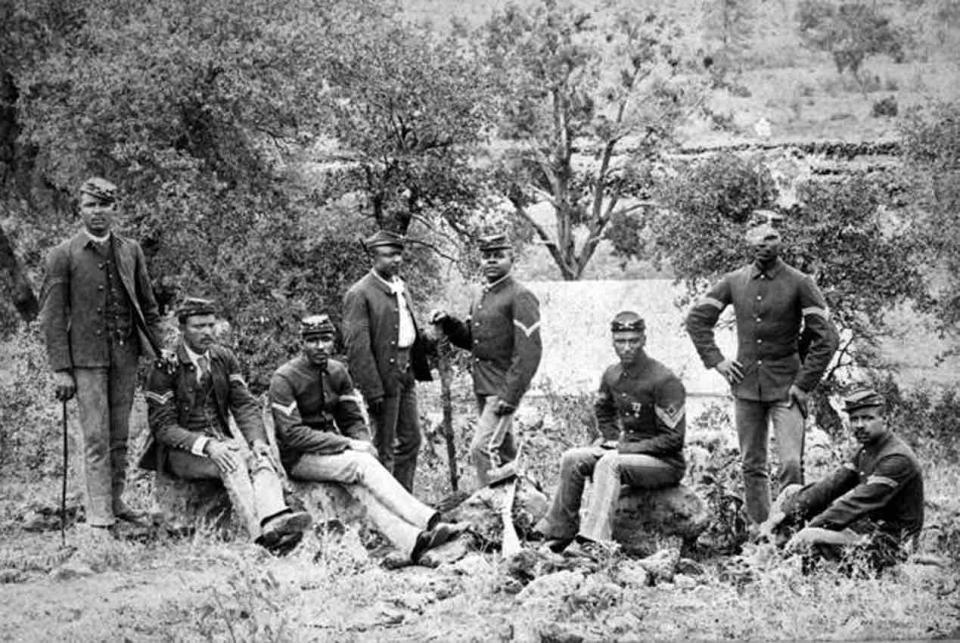Caprock Chronicles: Fort Elliott and Old Mobeetie: The earliest settlements on the Texas Plains, part one
- Oops!Something went wrong.Please try again later.
Editor’s Note: Jack Becker is the editor of Caprock Chronicles and is a Librarian Emeritus from Texas Tech University. He can be reached at jack.becker@ttu.edu. Today’s article is the first of a two-part series about Fort Elliott and Old Mobeetie by frequent contributor Chuck Lanehart, Lubbock attorney and award-winning history writer.
Following Coronado’s exploration of the Texas Plains in 1540-41, centuries passed before Anglos occupied the Llano Estacado. In about 1874, buffalo hunters established a primitive camp called “Hidetown” in what is now Wheeler County in the Texas Panhandle, soon to be transformed into a measure of civilization.

Four years later, a visiting Englishman found the Texas Panhandle prairie “heather-looking, but not heathery. Thin, gold, curly buffalo grass lies amongst, and around, large tufts of red, coarse herbage, which, had it been cut in May, would have made some of the sweetest hay.”
He admired more than the Panhandle landscape. The ladies he met on the High Plains were “unusually dashing equestrians, graceful dancers, good talkers, heart-breaking flirts, and as a rule enjoy the robust health which the semi wildness of their surroundings foster . . .” Within a couple of years, women in the vicinity would be portrayed in less virtuous terms.
The Englishman, Samuel Nugent Townsend, was one of the first to describe the earliest settlements of the Texas Plains, Fort Elliott and the adjacent village, known originally as Hidetown, then Sweetwater, Mobeetie and finally, Old Mobeetie.

Ten years earlier, Col. George Armstrong Custer dispatched Major Joel Elliott with an advance force of soldiers to flank a Cheyenne village before Custer’s deadly assault of the Native Americans in the Washita Massacre, in what is now southwestern Oklahoma. After the battle, Elliott and 15 of his troops were missing. Custer found Elliott and his men frozen stiff, naked and face down in a 60-foot circle, feet toward the inside of the circle, their backs full of arrows.
Elliott’s posthumous reward was his name attached to the first military outpost in the Texas Panhandle, near the headwaters of Sweetwater Creek, about 50 miles west of the site of the major’s death. Fort Elliott was established at the conclusion of the Texas Indian Wars, in 1875, when hostile Comanches, Kiowas and Cheyenne were forced onto reservations in Indian Territory, now Oklahoma.
Local materials — cottonwood, adobe and thatch — were used to construct the first guardhouse, storehouses and stables. Within three years, lumber hauled 200 miles from Dodge City, Kansas, was used to construct the post commander's residence, six sets of officers' quarters, five company barracks, a 12-bed hospital, the post headquarters, and a combined chapel and school, all one-story frame buildings on stone foundations.

Townsend criticized Fort Elliott as not a fort but a “barracks, incapable of being defended.” Nevertheless, Townsend wrote, the fort was among “the most charming possible oases in the desert . . .”
He regarded the US Cavalry as one of the hardest-working fighting units in the world. “It had to be ready to quell civil disturbances, annex Canada or Cuba, furnish perpetual escorts to all distinguished persons who travel in the wilds, and uphold the honor of the stars and stripes, mentally, morally, and by display of hospitality as well.”
The troops of Fort Elliott were prepared to ride out on short notice to pursue Indians who slipped off their reservations and entered their old range in Texas, so the soldiers seldom appeared in proper military attire.
“The US soldier in his barrack looks rather slovenly,” wrote Townsend, “and the officers who seldom wear any uniform except trousers, present a rather motley appearance to an eye accustomed to the rigid dress of European armies.”
About 400 troops were originally stationed at Fort Elliott, but normal strength was fewer than 200 men. African-American units — known as “Buffalo Soldiers” — of the Tenth US Cavalry, Twenty-fourth US Infantry and Ninth US Cavalry — served at the garrison. At times, Fort Elliot’s troops were all Black, commanded by Anglo commissioned officers. An exception was Lt. Henry O. Flipper, the first Black graduate of West Point.

The troops were tasked with keeping Native Americans on reservations and away from the Texas High Plains. Later, soldiers protected the growing Panhandle cattle industry, supervising Texas herds being driven north to market through hostile lands.
Soon, Fort Elliott provided enough security for stockmen to dominate the region, and large cattle ranches were established. By 1880, nearly 300,000 cattle grazed the Panhandle.
Thanks to its proximity to Fort Elliott, the buffalo hunters' camp called Hidetown was transformed into a village known as Sweetwater, named for the nearby creek of the same name. In addition to buffalo hunters, Sweetwater was soon populated by merchants, cattlemen and others eager to take advantage of the commerce and protection offered by Fort Elliott.

The town was “patronized by outlaws, thieves, cut-throats and buffalo hunters, with a large percentage of prostitutes,” said iconic Panhandle cattleman Charles Goodnight.
In 1882, Temple Lea Houston — Sam Houston's youngest son — was appointed the first District Attorney of the 27-county judicial district. After his arrival in the remote village, he wrote his wife the place was "a baldheaded whiskey town with few virtuous women."
Part Two of Chuck Lanehart’s series on Fort Elliott and Old Mobeetie will be published in next Sunday’s Lubbock Avalanche-Journal.
This article originally appeared on Lubbock Avalanche-Journal: Caprock Chronicles: Fort Elliott and Old Mobeetie: The earliest settlements on the Texas Plains, part one

